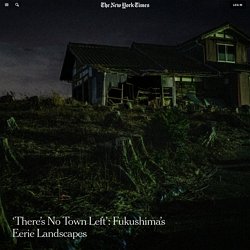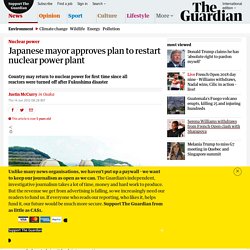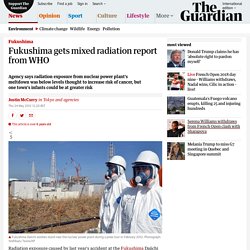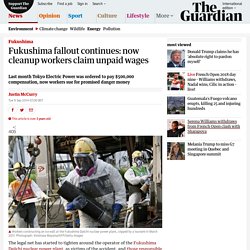

Japan's recovery from tsunami disaster, by the numbers. Japan's recovery from tsunami disaster, by the numbers By MARI YAMAGUCHI March 11, 2021 GMT TOKYO (AP) — Ten years after a massive earthquake and tsunami devastated Japan’s northeastern coast, triggering meltdowns at the Fukushima nuclear power plant, much has been achieved in disaster-hit areas but they are still recovering.

Numbers show how much progress has been made and what still remains. The magnitude 9.0 earthquake was one of the strongest temblors on record. The National Police Agency says 18,426 people died, mostly in the tsunami, including 2,527 whose remains have not been found. Nearly half a million people were displaced across the northeastern region. The government has spent 32 trillion yen ($295 billion) for the region’s recovery, including construction of roads, seawalls and houses, and support for people’s livelihoods. Fukushima Photos: 10 Years Later. Ten years after a devastating earthquake and tsunami led to a nuclear meltdown in northern Japan, residents are readjusting to places that feel familiar and hostile at once.

FUKUSHIMA, Japan — After an earthquake and tsunami pummeled a nuclear plant about 12 miles from their home, Tomoko Kobayashi and her husband joined the evacuation and left their Dalmatian behind, expecting they would return home in a few days. It ended up being five years. Even now — a decade after those deadly natural disasters on March 11, 2011, set off a catastrophic nuclear meltdown — the Japanese government has not fully reopened villages and towns within the original 12-mile evacuation zone around the Fukushima Daiichi nuclear plant. And even if it did, many former residents have no plans to return.
Some of those who did return figured that coming home was worth the residual radiation risk. “We had reasons to come back and the means to do so,” said Ms. “I’m always asked, ‘Why did you return? Mr. Like Mr. 10 Years After Fukushima Disaster, This Nurse May Be the Region’s Best Hope. Rina Tsugawa recalls a charmed childhood amid rice paddies in northeastern Japan, hopping on bicycles with her sister and roaming the streets of their village, where monkeys sometimes descended from the mountains and neighbors offered the girls sweets as they popped into their homes.

The sisters were the only children in their hamlet in Fukushima Prefecture, living with their mother and grandparents in the house where their grandfather was born. On that terrible day a decade ago when Fukushima was struck by a catastrophic earthquake and tsunami, setting off a triple meltdown at a nuclear power plant, a 12-year-old Ms. Tsugawa was at school 90 miles inland.
As the powerful shaking jolted her sixth-grade classroom, she and her classmates hid under their desks, crying in fear. In the years since, many of her peers have left for jobs in Tokyo and other cities, an outflow common to rural Japan but accelerated by the disaster in Fukushima. “They gave us so much when we were little,” said Ms. Japanese mayor approves plan to restart nuclear power plant. Japan has taken a potentially decisive step towards restarting two of its idled nuclear reactors after the mayor of a town located near a power plant approved plans to bring it back into operation.

The country has been without nuclear power since 5 May, when a reactor in the northern island of Hokkaido became the last of 50 working reactors to be shut down in the wake of the Fukushima nuclear disaster. Four other reactors at Fukushima Daiichi nuclear power plant were badly damaged when the plant was hit by a magnitude-9.0 earthquake and 14-metre tsunami on 11 March 2011. Dozens of others have been closed for regular maintenance, and cannot be restarted until they pass stress tests introduced by the government last year to address public concerns over safety. Issei Nishikawa, the governor of Fukui prefecture – Japan's "nuclear alley" with 13 reactors – is also expected to approve the measure.
The Japanese prime minister, Yoshihiko Noda, is expected to make the decision official on Saturday. Fukushima gets mixed radiation report from WHO. Radiation exposure caused by last year's accident at the Fukushima Daiichi nuclear power plant was below levels thought to increase the risk of cancer in almost all parts of Japan, according to a World Health Organisation report.

But in its preliminary estimate [pdf] released on Wednesday, the WHO said infants in one town near the plant could be at a greater risk of developing thyroid cancer after exposure to radioactive iodine-131. The study is the first by a UN agency since the Fukushima plant was hit by a 14-metre (46ft) tsunami following a magnitude-9.0 earthquake on 11 March last year.
The wave knocked out the facility's back-up power supply, causing three of its six reactors to suffer meltdown. Infants in Namie were thought to have received thyroid radiation doses of between 100 and 200mSv a year. "That would be one area because of the estimated high dose that we would have to keep an eye on," WHO spokesman Gregory Hartl told Reuters. . … we have a small favour to ask. Fukushima fallout continues: now cleanup workers claim unpaid wages. The legal net has started to tighten around the operator of the Fukushima Daiichi nuclear power plant, as victims of the accident, and those responsible for clearing it up, take their grievances to the courts.

Last week, Tokyo Electric Power (Tepco) said it would not contend a court ruling ordering it to pay almost $500,000 in compensation to the family of a woman who killed herself two months after being forced to flee her home near the plant. That claim, which could pave the way for similar suits, has been followed by a unprecedented attempt by four Fukushima Daiichi workers to sue the utility for unpaid wages. The two former and two current workers, aged in their 30s to 60s, claim that Tepco and its contractors failed to ensure they were paid mandatory hazard allowances, on top of their regular wages.
Red skies and abandoned ostriches: the fallout from Fukushima – in pictures. Red skies and abandoned ostriches: the fallout from Fukushima – in pictures.